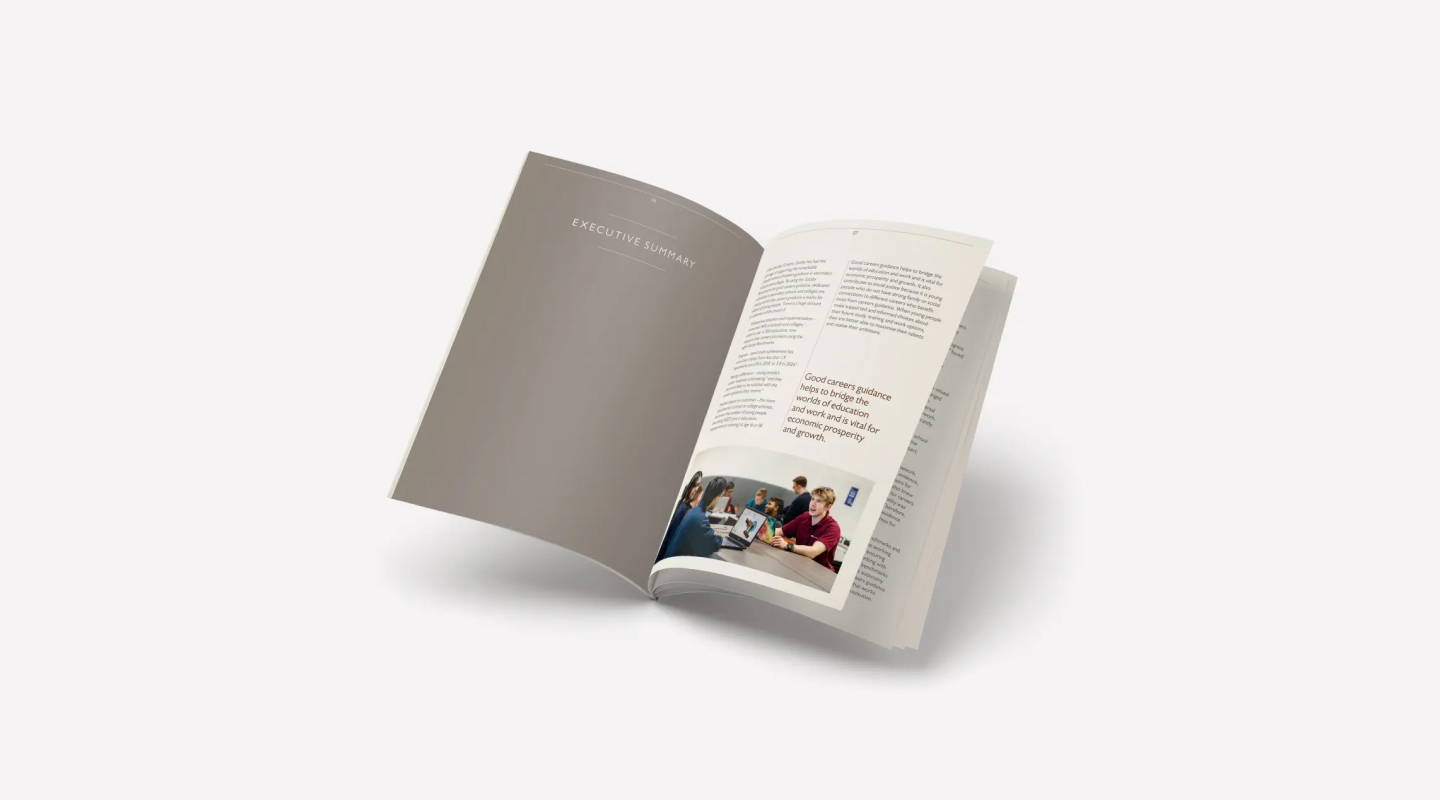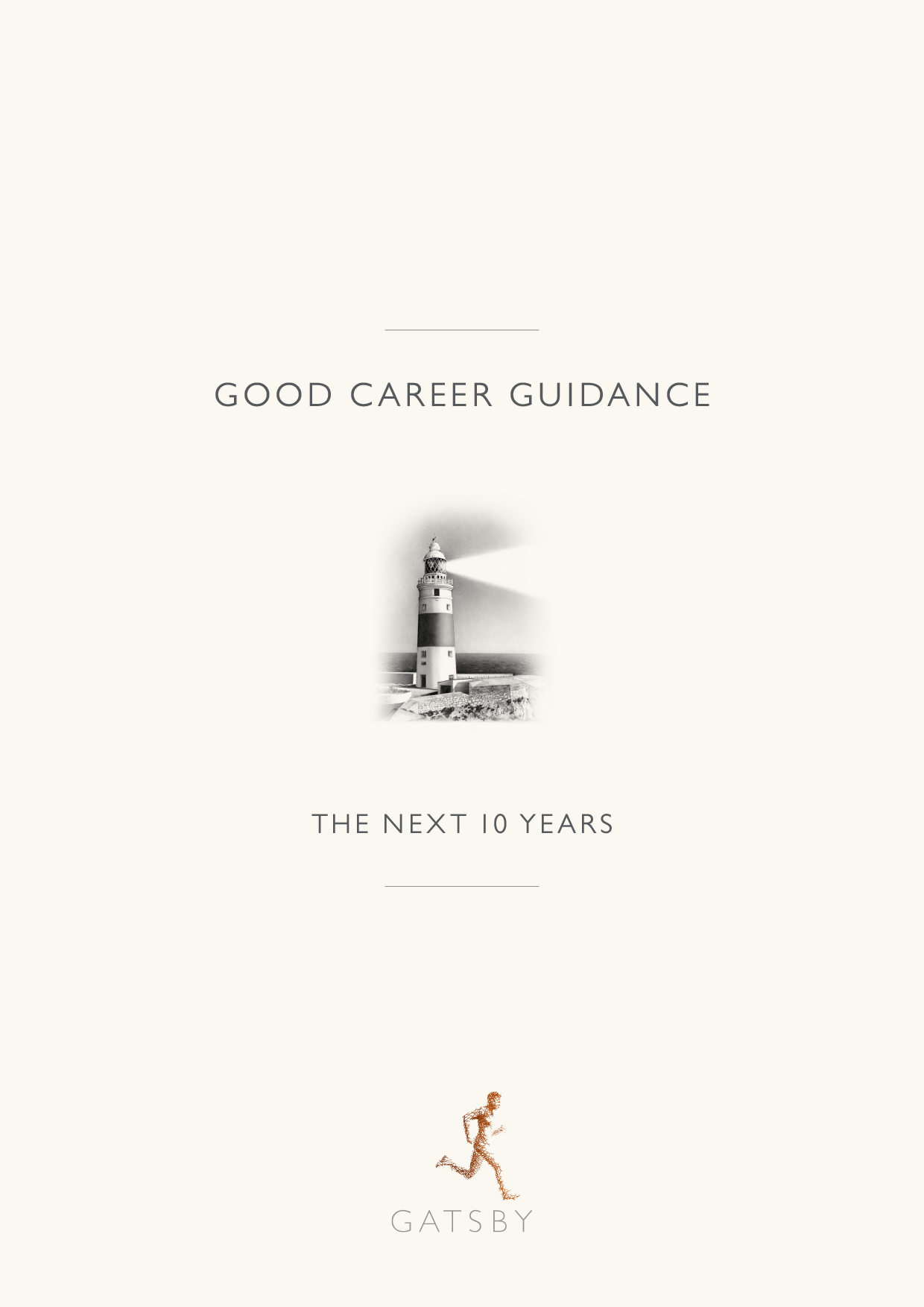A guide toGatsby Benchmark 4
Linking curriculum learning to careers
As part of the school’s programme of careers education, all teachers should link curriculum learning with careers. Subject teachers should highlight the progression routes for their subject and the relevance of the knowledge and skills developed in their subject for a wide range of career pathways.

Criteria for Schools
- Every year, in every subject, every pupil should have opportunities to learn how the knowledge and skills developed in that subject helps people to gain entry to, and be more effective workers within, a wide range of careers.
- Careers should form part of the school’s ongoing staff development programme for teachers and all staff who support pupils.
As part of the provider’s programme of careers education, all subject staff should link curriculum learning with careers, even on courses which are not specifically occupation led. Subject staff should highlight the progression routes for their subject and the relevance of knowledge and skills developed in their subject for a wide range of future career paths.

Criteria for Colleges and ITPs
- Throughout their programme of study (and by the end of their course) every learner should have opportunities to experience how knowledge and skills developed in their subjects help people gain entry to, and be more effective workers within, a wide range of occupations.
- Careers should form part of the provider’s ongoing staff development programme for subject staff and all staff who support learners.
Integrating careers into the curriculum can help young people see the relevance of their learning and become familiar with a wider range of career pathways.
Good Career Guidance: The Next 10 Years
Case Study: Southmoor Academy
Leaders at Southmoor Academy have developed a whole-institution approach to integrating careers into the curriculum, which helps pupils understand the relevance of what they are learning.
Staff define the skills being developed in the curriculum and use the Skills Builder Universal Framework (see box on this page) to ensure a shared language and understanding of those skills. One-third of every lesson is dedicated to careers and skills and this approach is fully embedded in the school’s teaching and learning strategy.
Because careers learning is planned into every lesson, in every subject and in every year group, young people make connections between different subjects. They use this understanding to inform their decisions about potential career paths and study options.
The careers leader told us:
Our careers programme links our pupils to their future and our subject curriculum links them to the skills the future values.
Careers leader, Southmoor Academy
The careers leader also works with other leaders to plan careers learning into a proportion of ASPIRE, the school’s personal, social, health and economic (PSHE) education programme for every year group. The school’s quality assurance processes monitor the implementation of this whole-institution approach.
Careers is included in the induction for new staff and the careers leader delivers continuing professional development (CPD) for teachers and all staff who support pupils.
Case Study: Cowes Enterprise College
Cowes Enterprise College, a coastal school on the Isle of Wight, has developed a Key Stage 3 curriculum contextualised by the maritime sector, a sector that is of both local and national importance. Delivery is planned by teachers from different departments working together and supported by the careers leader. Local maritime employers advise on curriculum content and help deliver some lessons. For example, pupils visit employees from industry at the Centre of Excellence for Composites, Advanced Manufacturing and Marine at the Isle of Wight College, where they learn how to construct a circuit that produces a Morse code signal while exploring careers linked to safety at sea.
Case Study: Lift Schools
Lift Schools (formerly the Academies Enterprise Trust), one of the largest multi-academy trusts (MATs) in England, implemented a strategic approach to linking curriculum learning to careers.
Groups of teachers developed resources that embedded careers into the curriculum, to be used by all schools in the Trust. For example, maths teachers worked together to identify areas of the curriculum that they felt were particularly challenging concepts, either to teach or for pupils to grasp. A lead teacher was appointed to engage with an employer who was sourced through the careers hub network. The lead teacher and employer discussed the maths learning objective, with the employer providing context to be used in the resource on how the topic applied to their sector.
Teachers do not see this as extra work, but as a way to deliver what is expected of them, using the context of the workplace to do it differently. The curriculum objective remains the driver, with subject learning underpinned by careers learning. Resources have been created for maths with Pinewood Studios, English with Tesco, science with Pfizer and geography with the National Trust.
These resources are a clever blend of context and authentic mathematical content. They are engaging and real but the workplace context doesn’t dilute any of the maths elements. Instead, the tasks offer a brilliant alternative to traditional delivery approaches for maths topics found in every curriculum. The resources bring mathematics alive in the real world, rooting classroom maths in the glorious and challenging reality of real data and problems faced in the workplace.
Head of Curriculum, Lift Schools
Case Study: Newcastle College
Newcastle College has 20 subject departments, organised into four faculties. The careers leader works closely with the faculty directors and heads of curriculum who are responsible for embedding careers learning effectively in each subject and programme of study. The aim is for every faculty to support the development of the skills that students need for their next steps. Curriculum staff are encouraged to actively collaborate with industry sectors by building strong networks with business partners. Every faculty has an advisory board of employers to ensure that future skills needs are understood and that evolving work practices are integrated into curriculum design. The assistant principal told us:
We have to provide a curriculum offer that addresses the current and future skills needs of employers and prepares young people for their future. The Gatsby Benchmarks have helped us to organise our careers provision so that it has a clear purpose and is prevalent in all of our faculties.
Assistant Principal, Newcastle College
In practice, this means every taught session includes activities to prepare young people for their chosen sector. Teachers support young people to link the development of their skills, knowledge and behaviours to their personal career and progression goals. Staff also provide opportunities for all young people to regularly reflect on what they have learnt.

Skills Builder Universal Framework
The Skills Builder Universal Framework defines eight essential skills that are needed in any job:
- listening
- speaking
- problem-solving
- creativity
- staying positive
- aiming high
- leadership
- teamwork
The framework provides a consistent understanding of what are often referred to as ‘employability skills’. It also provides a way to track progress of each skill through a series of steps from beginner through to mastery.
The framework can be used in different ways. Educators can use it to develop employability skills with young people. Employers can use it to support their engagement with education institutions and to support the career progression of their staff. Individuals can also use the framework to help develop their skills throughout life.

Sector Example - Spain: Careers guidance and the curriculum
Effective careers guidance can enhance both the educational experiences of students and their preparation for their future careers. Inspired by the Gatsby Benchmarks in England, the Bertelsmann Foundation in Spain has developed its own framework for careers guidance, called the Xcelence model. This has prompted deep reflection among teaching staff about the critical nature of bridging the gap between the curriculum and the world of work.
Adopted in over 300 schools across the Catalonia and Madrid regions by 2024, the Xcelence framework has improved young people’s career readiness, heightened their engagement with school and increased their enthusiasm for exploring diverse career opportunities.

Sector Example: Careers guidance at the Science Museum
Technicians: The David Sainsbury Gallery at the Science Museum has interactive exhibits that directly reference specific careers, with content linked back to many subjects. The gallery gives visitors the chance to try out typical tasks for a variety of technician roles across industry, from a lighting technician on a Marvel Studios film set to a pharmacy technician in the National Health Service (NHS). The gallery hosts school visits, including interactive sessions with real technicians.
The gallery is supported by a website showcasing over 100 technician case studies and resources to support teachers to deliver careers in the curriculum.
Jump to Benchmark
Gatsby Benchmark 1
A stable careers programme
Gatsby Benchmark 2
Learning from career and labour market information
Gatsby Benchmark 3
Addressing the needs of each young person
Gatsby Benchmark 4
Linking curriculum learning to careers
Gatsby Benchmark 5
Encounters with employers and employees
Gatsby Benchmark 6
Experiences of workplaces
Gatsby Benchmark 7
Encounters with further and higher education
Gatsby Benchmark 8
Personal guidance

Publications
Browse our full collection of downloadable resources, including the reports themselves, associated appendixes and supporting literature.
